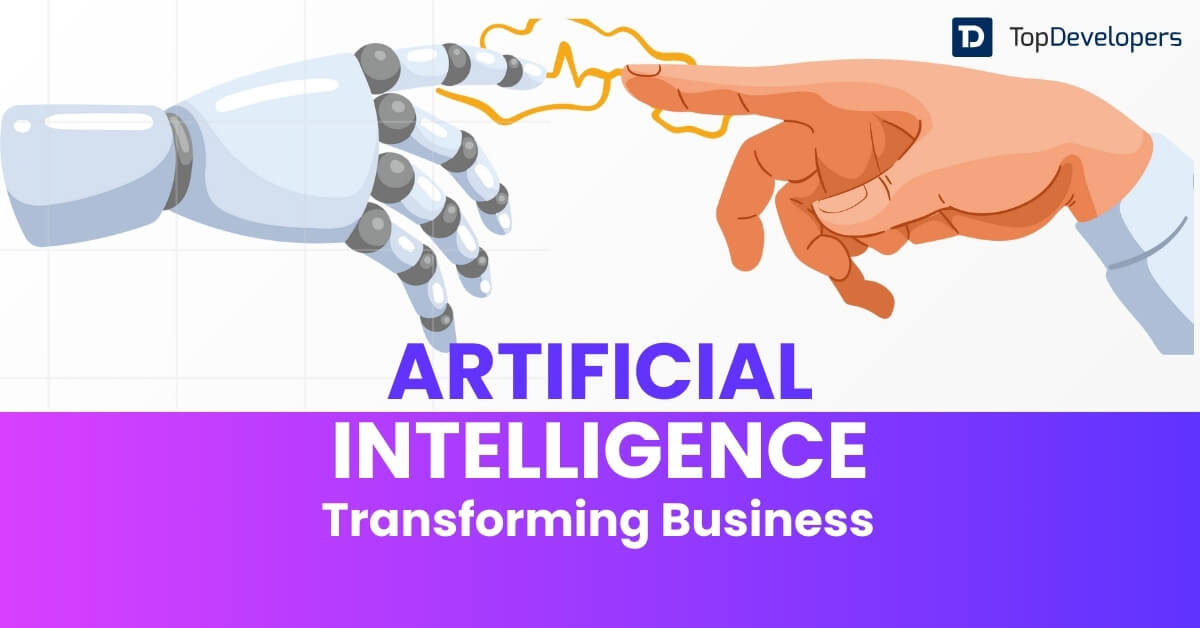
AI agents are intelligent systems that can perceive their environment, make decisions, and take actions to achieve specific goals. They are not just lines of code responding to simple inputs. These agents act autonomously, adapt to new information, and optimize outcomes based on real-time data.
By 2025, AI agents are expected to become a core component of business workflows. From managing customer queries to optimizing operations, these systems will handle complex tasks once managed by humans. They go far beyond rule-based automation or standard chatbot functions.
Unlike basic automation tools, AI agents are proactive. They don’t wait for human prompts to execute. They understand goals, learn from past interactions, and adapt their strategies over time. Traditional chatbots often follow pre-set scripts. AI agents can dynamically assess situations and deliver contextual responses or actions.
This shift is already visible in user behavior. According to Statista, 26 percent of users now prefer AI agents over traditional apps for completing certain tasks. This trend highlights a broader transition from reactive automation to intelligent assistance.
As AI agents mature, their impact on workflow automation will only deepen. They will become essential tools for teams looking to scale, innovate, and compete in the evolving digital landscape.
Keep reading to explore the different types of AI agents. You will also discover real-world use cases that show how these intelligent systems are transforming everyday workflows.
7 Major Types of AI Agents Explained
AI agents can be grouped into distinct categories based on how they operate and make decisions. Each type serves a different purpose and fits unique use cases across industries.
1. Simple Reflex Agents
Simple reflex agents are one of the most basic forms of artificial intelligence. These agents make decisions based solely on their current sensory input, responding immediately to environmental stimuli without needing memory or learning processes. Their behavior is governed by predefined condition-action rules, which specify how to react to particular inputs.
Though they are limited in complexity, this straightforward approach makes them efficient and easy to implement, especially in environments where the range of possible actions is limited.
Key components:
- Sensors: These gather basic input from the environment, such as temperature, motion, or specific patterns.
- Condition-action rules: Predefined logic that maps specific conditions to exact responses. The rules are fixed and reactive.
- Actuators: Devices or systems that carry out the chosen response, such as triggering an alert or turning on a system.
Use cases:
- Smart thermostats that turn heating or cooling on when a specific temperature is detected
- Automated sprinkler systems activated by smoke or heat sensors
- Basic fraud detection tools that flag transactions matching suspicious patterns
- Email auto-responders that send replies based on keywords
- Intenseye integrates with CCTV to detect risky activity in workplaces and sends alerts based on preset safety rules
- Feedzai helps banks scan transactions and flag money laundering or payment fraud using rule-based logic
2. Model-Based Reflex Agents
Model-based reflex agents take a step beyond simple reflex agents by incorporating a model of the environment. They use limited memory to track changes and use that information to make more informed decisions.
These agents respond not only to immediate input but also to what they infer about the current state based on past inputs. They are especially useful in environments where the system’s status may not always be fully observable at a single point in time.
Key components:
- Sensors: These collect environmental data just like in simple reflex agents.
- Internal model: A representation of the environment that stores past events and predicts likely outcomes.
- Condition-action rules: These still guide decisions, but the agent also refers to its internal model to adjust its actions.
- Actuators: Carry out responses based on rules and the state of the internal model.
Use cases:
- Robot vacuums that create and update floor maps to clean efficiently
- Smart lighting systems that adjust brightness based on time of day and recent user activity
- Voice assistants that track recent interactions to provide context-aware responses
- Industrial machinery that adapts operations based on recent wear or production patterns
- Environmental monitoring drones that log previous air quality data to plan routes more effectively
Explore This Research: Top AI Agents for Web Development: Transforming Frontend to Deployment
3. Goal-Based Agents
Goal-based agents are designed to pursue specific objectives. These agents make decisions by evaluating how each possible action will bring them closer to their defined goals.
They are more flexible than reflex agents because they consider future outcomes when making decisions. Instead of reacting, they plan and adjust based on their targets and environmental changes.
Key components:
- Sensors: Capture information to determine the current state of the environment.
- Goal database: Stores the agent’s desired outcomes or objectives.
- Decision engine: Evaluates different actions and predicts which are most likely to help the agent reach its goal.
- Actuators: Execute the selected actions to move toward the goal.
Use cases:
- GPS navigation systems that select optimal routes and reroute based on traffic
- Logistics software that adjusts delivery schedules based on new constraints
- Drone systems that plan search paths during rescue operations
- Autonomous robots in warehouses that choose the best route to retrieve inventory
- Planning systems in project management tools that prioritize and assign tasks
4. Utility-Based Agents
Utility-based agents evaluate the quality of different outcomes. Instead of simply reaching a goal, they aim to achieve the most desirable one. These agents use utility functions to assign value to results and make informed trade-offs between options.
They are ideal for environments where multiple good options exist, but some outcomes are better than others. They consider short-term and long-term impacts before making a move.
Key components:
- Sensors: Gather data for evaluating different states of the environment.
- Utility function: A scoring system that ranks outcomes based on usefulness or desirability.
- Decision module: Selects the action with the highest expected utility based on current data.
- Actuators: Implement the best option identified through utility evaluation.
Use cases:
- Autonomous vehicles that evaluate multiple route options based on safety, speed, and passenger comfort
- Smart energy systems that adjust power usage for both cost savings and environmental impact
- Financial investment bots that weigh risk against potential return
- Supply chain systems that balance speed and cost when selecting vendors or shipping routes
- Adaptive learning platforms that adjust content difficulty based on user engagement and outcomes
5. Learning Agents
Learning agents can improve their performance over time. They observe the results of their actions, learn from experience, and adjust their behavior. These agents often use machine learning techniques like neural networks and reinforcement learning.
They are highly adaptive and can operate in dynamic environments where predefined rules or models are insufficient.
Key components:
- Sensors: Input data to monitor the environment and capture feedback.
- Learning module: Uses machine learning to adjust behavior based on past experiences.
- Performance element: Makes decisions and performs actions.
- Critic: Provides feedback to the learning module based on the effectiveness of actions taken.
- Actuators: Carry out decisions with updated strategies.
Use cases:
- AI chatbots that refine responses based on customer satisfaction data
- Virtual tutors that adapt lessons based on student performance
- Fraud detection tools that learn from false positives and new fraud patterns
- Smart assistants that suggest content based on changing user interests
- Marketing tools that optimize campaigns using user behavior and conversion results
6. Hierarchical Agents
Hierarchical agents use a structured approach, dividing decision-making into multiple levels. Lower layers handle basic tasks, while upper layers manage planning, coordination, and strategy.
This layered model helps manage complexity and is useful in enterprise and industrial automation systems where tasks must be broken down and delegated effectively.
Key components:
- Sensors: Capture detailed input from different system levels.
- Control layers: Distinct levels of logic, where lower layers perform simple actions and higher layers oversee strategy and planning.
- Planner and scheduler: Coordinates decisions across multiple layers and resources.
- Actuators: Implement actions at various levels of the system.
Use cases:
- Enterprise workflow bots that handle data input, routing, and approvals across departments
- Robotics systems where sensors control movement while central logic handles task allocation
- Manufacturing systems with layers for machine control, product assembly, and supply coordination
- Healthcare automation where patient data is gathered at one level and treatment recommendations happen at a higher level
- Cloud infrastructure managers that scale services based on real-time resource monitoring and organizational priorities
7. Multi-Agent Systems (MAS)
Multi-agent systems involve several AI agents interacting within a shared environment. These agents may cooperate, compete, or operate independently toward their own or shared goals.
Such systems are designed for large-scale problems where a single agent cannot perform all tasks effectively. Agents may communicate, negotiate, or share data in real time.
Key components:
- Multiple agents: Each with its own sensors, logic, and goals.
- Coordination mechanism: Ensures agents can communicate and collaborate when needed.
- Environment interface: A shared system where agents act and receive feedback.
- Actuators: Let agents individually or collectively affect the environment.
Use cases:
- Drone swarms used for coordinated search, mapping, or delivery tasks
- Multiplayer gaming AI that simulates complex behavior patterns
- Warehouse robotics systems that delegate picking and packing among agents
- Financial platforms where different bots analyze sectors and share market signals
- Simulation environments for traffic management, disaster response, or crowd movement modeling
Explore This Research: Top AI Agents for Software Development in 2025
Future Trends in AI Agent Development
AI agents are evolving quickly. What was once limited to simple automation is now becoming a foundation for intelligent, independent decision-making. As we move into 2025 and beyond, several key trends are shaping the future of AI agent development.
LLM-Powered Autonomous Agents
Large Language Models, or LLMs, are now at the core of many AI systems. They allow agents to understand and generate human-like responses, making conversations feel more natural and intuitive. These agents can summarize documents, follow multi-step instructions, and even write code or generate reports.
By combining reasoning and language capabilities, LLM-powered agents are moving beyond basic chatbot roles. They can manage workflows, carry out research, or assist in creative tasks. This shift is helping businesses replace rigid interfaces with fluid, conversational systems.
Growth of Agentic AI Platforms
Agentic AI platforms are tools that allow users to build, deploy, and manage autonomous agents with ease. These platforms often offer drag-and-drop tools, pre-trained models, and integration with APIs and business systems.
They reduce the technical barrier for teams to use AI in real-world tasks. Developers and non-technical users alike can now create agents that perform scheduling, document processing, and customer engagement. As these platforms grow, they are accelerating adoption across industries like healthcare, finance, and logistics.
Human-Agent Collaboration
AI agents are not replacing humans. They are becoming smart assistants that work alongside us. These agents take care of routine tasks, so teams can focus on creative problem-solving and decision-making.
Collaboration between humans and agents is becoming more seamless. Agents can suggest ideas, flag issues, and provide insights. They can also adapt based on feedback, improving over time. This creates a more dynamic and productive work environment.
In the near future, most professionals will interact with AI agents daily. Whether through smart inboxes, voice assistants, or automated tools, this collaboration will become the new normal.
Final Thoughts: Building Smarter AI with the Right Agent Types
AI agents are reshaping how businesses approach automation and problem-solving. From simple reflex agents to multi-agent systems, each type brings unique strengths to the table. Some work best in rule-based environments. Others thrive on learning, goal-seeking, or collaboration.
Choosing the right type depends on the task at hand. Reflex agents are perfect for fast, predictable responses. Model-based and goal-driven agents offer more depth for dynamic settings. Learning and utility-based agents are great for adapting to change and balancing outcomes. Hierarchical and multi-agent systems are built for scale and complexity.
For developers, the key is understanding which agent architecture fits your application. Consider the complexity of the environment, the level of control needed, and the potential for learning or coordination.
Businesses looking to implement AI should start small and grow strategically. Working with experienced teams can accelerate results and reduce risk. Many top AI Agent Development Companies offer tools, services, and guidance to help organizations deploy the right solutions for their needs.
With the right agent type and support, companies can build smarter systems that deliver real-world impact and long-term value.
FAQ on Types of AI Agents
What are the main types of AI agents?
The main types include simple reflex agents, model-based agents, goal-based agents, utility-based agents, learning agents, hierarchical agents, and multi-agent systems. Each is designed for different levels of decision-making and adaptability.
Which type of AI agent is used in chatbots?
Most chatbots use model-based or learning agents. These agents track conversation history and improve responses over time. Advanced chatbots may also use goal-based agents to complete tasks like bookings or troubleshooting.
What’s the difference between goal-based and utility-based agents?
Goal-based agents focus on reaching a specific target. Utility-based agents go further by choosing the best possible outcome. They compare options and select the one with the highest overall value or benefit.
How do learning agents improve over time?
Learning agents use feedback from past actions to adjust future behavior. They apply techniques like reinforcement learning or pattern recognition to make smarter choices as they gain more experience.
What is a multi-agent system (MAS)?
A multi-agent system is a group of AI agents that work together or independently in the same environment. These agents can share information, coordinate actions, or compete to solve complex tasks more efficiently.
 Avantika Shergil
| Jul 31, 2025
Avantika Shergil
| Jul 31, 2025
Avantika Shergil is a technology enthusiast and thought leader with deep expertise in software development and web technologies. With over 8 years of experience analyzing and evaluating cutting-edge digital solutions, Avantika has a knack for demystifying complex tech trends. Her insights into modern programming frameworks, system architecture, and web innovation have empowered businesses to make informed decisions in the ever-evolving tech landscape. Avantika is passionate about bridging the gap between technology and business strategy, helping businesses build customized software and website, and understand about different tools to leverage effectively for their ventures. Explore her work for a unique perspective on the future of digital innovation.





